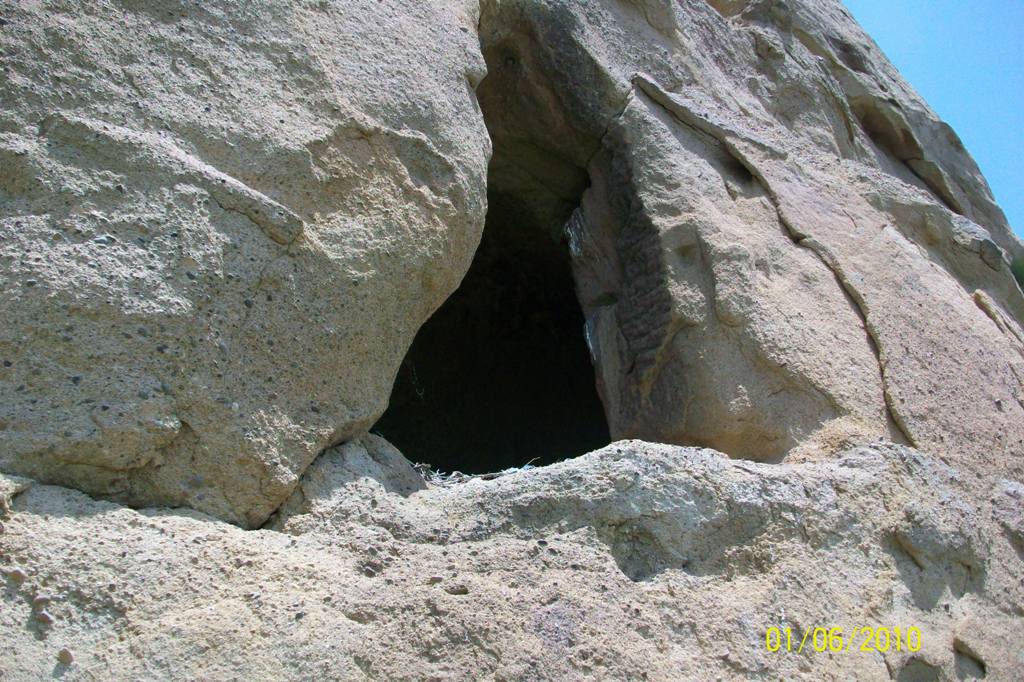“Keshikchidagh” state historical and cultural reserve is located at 75 km distance from the centre of Aghstafa, 28 km from Boyuk-Kasik village. The reserve covering approximately 25 square km stretches Azerbaijani-Georgian border. Caves complex is situated on the boundless Jeyranchol, Gatardagh chain, 15 kilometre north-east from Jandar lake, on the precipice sheer cliffs surrounding south and south-east of mountains from the height of 750-950 meters above sea level. There are more than 70 caves, a castle, two temples and a sacred place in “Keshikchidagh” state historical and cultural reserve. Local pagans – people worshiping the moon, the sun – to preserve their religious views, to protect themselves from attacks has settled in these mountains. Later fire-worshipers preserving their belief have isolated themselves from the world and have lived in the cave-shelters by carving rocks. The natural caves here are 2 thousand years old. The creation of artificial caves locating in this region stands to the 8-15th centuries. Most of them were created with chopping, carving or sculpting the sandy steep rocks. As the natural conditions of the region were suitable for the ascetic life-style, the priests who have come Caucasian Albania from the Middle East in the first centuries AD have settled in these caves. After the adoption of Christianity as the official state religion in Caucasian Albania in the fourth century, as in other regions, architecture began to blossom and this gave a push to the construction of the religious temples.
Local people have used these caves, for living and conducting of religious ceremonies by expanding the existing and chopping the new ones. The composition of the rocks consists of petrified sandy rocks. The ceiling of the building has been smoked in order to increase the wall strength of the caves. Some of the caves are square-shaped. The ceilings are dome-shaped. The caves distinctive with small size, sculpted for living, with lower height consist of one and few rooms and have single bed and chapel. Each cave has the entrance and loophole-shaped windows. Some of the cells are provided with general entrance. There are nested links between separate cells carved on the top of each other. A bed, niches and fire place in hollows that makes available the fascinating panorama of Jeyranchol inform us about the standards and life style of ascetics that have lived here. Though caves are partially destroyed, it exists for thousand years and after us several generations will see them.
The priests who understood the necessity of economic use of rain water due to harsh climate conditions and drought has carved hollows for water wells on the rocks. People first collected rain water in the settling places through gutters and later put the water to a deep well to keep water always cool. It is confirmed by ancient historians that the residents of the area has been in great need of water. Plutarch writes that Roman commander Pompey became angry of Albanian revolt in Caucasian Albania and sent troops to suppress the revolt in 65 BC. He prepares for placing under command Kambisena passing over the Kura River and the vast arid steppe and overcoming a long distance and orders to stock 10 thousands of water blister for this purpose.
Albanians to preserve their religion and themselves related with the spread of Islam in Caucasian Albania in 7-8th centuries, sheltered in steep rocks of these mountains. The construction of the fortress-type building on the impassable rocks in the complex of caves is explained as exposure of the area to attacks from time to time. These lands were destroyed in the 11th century by the Seljuks, later were subject to destruction by Mongols in the 13th century. Tamerlane has attacked on these places, too. However, the most serious blow was struck to the cave-temples by Shah Abbas I and he executed five thousands of Albanian priests that refused to tergiversate in 1615.
In late 18-19th centuries, an interest of people to the cave-temples has somehow decreased and the place has begun to turn into the ruins. This was due to the fact that in 1836 the Russian Tsardom intentionally has abolished Albanian Catholicate existing in Caucasian Albania and gave it to the subordination of the Armenian Gregorian Church.


































